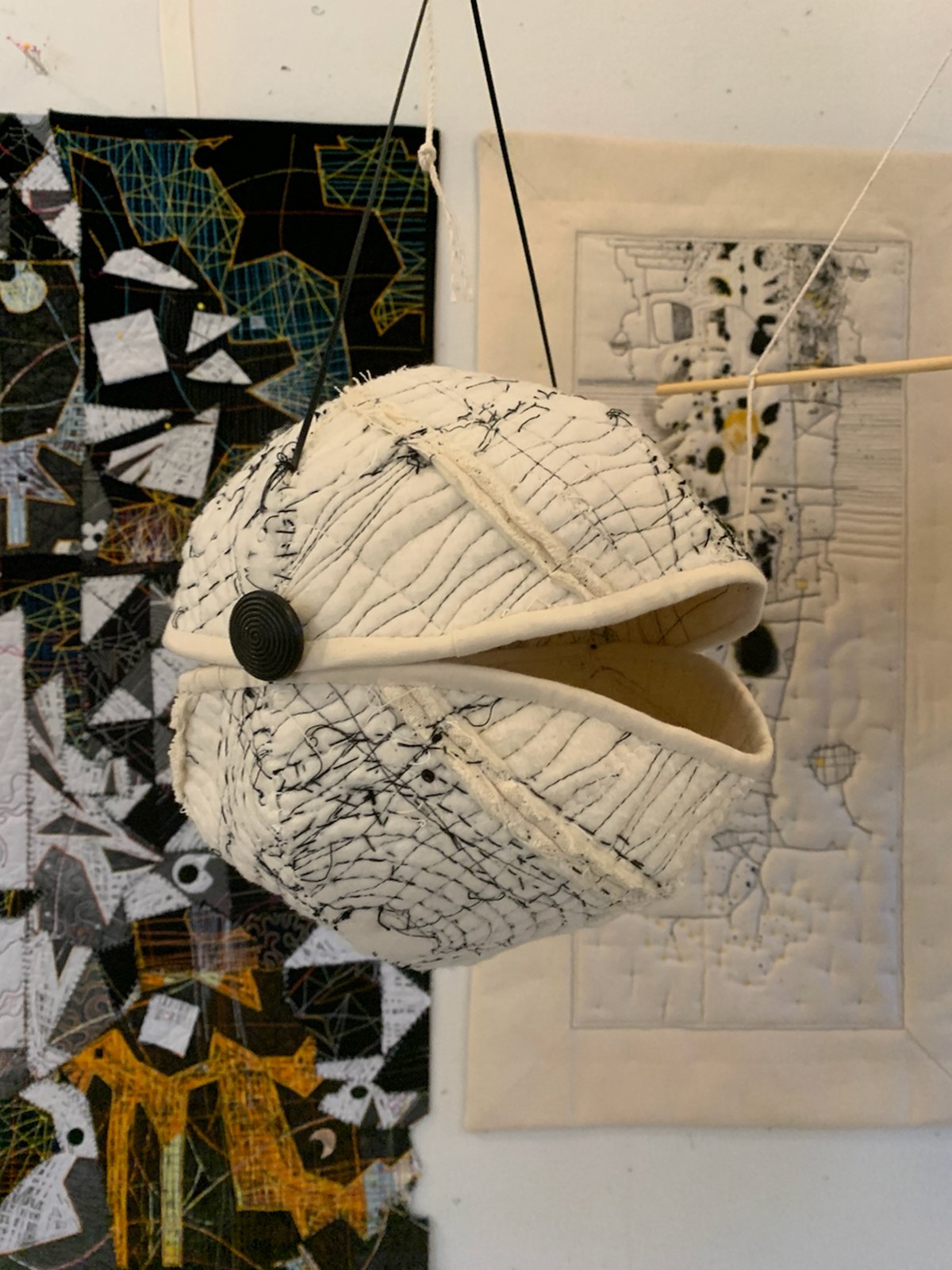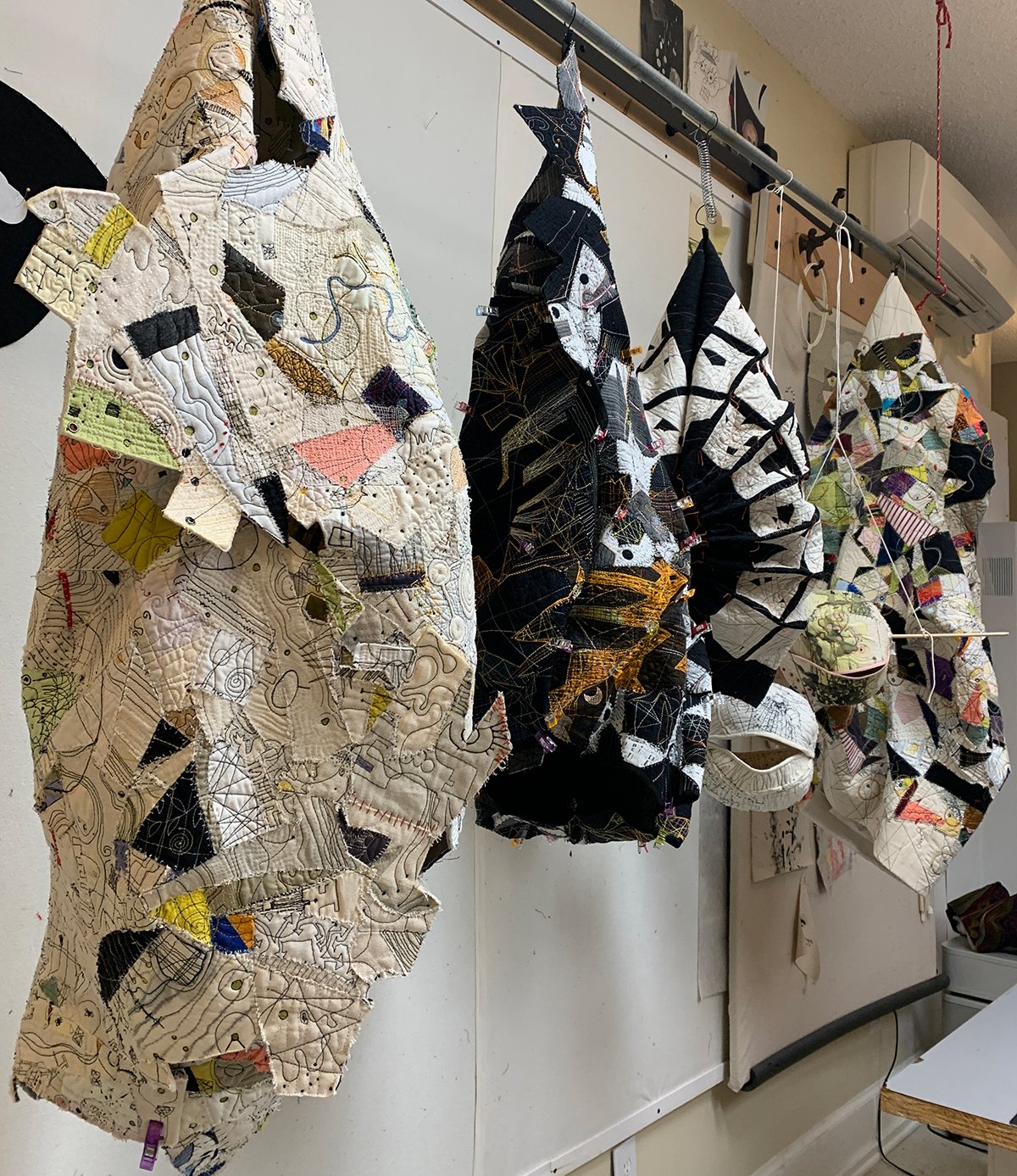Wrestling with rectangles to create 3D forms just seems like the right thing to do right now. Slicing, folding, forming, stitching, stuffing and exploring dimensional work is a substitute for the quiet contemplation that is required for stitching at the machine. I have to find ways to inject humor and distraction into my news cycle. My body is not my body right now. It aches with worry for the future. I have nervous energy. Itchiness at the edge of consciousness. Sorrow for Ukraine, Syria, Afghanistan, Ethiopia. I feel like we are marching into mountains of disaster. I am building a parade—headless beings marching.
These headless creatures have taken over my studio.
I imagine these creatures as travelers. They could be immigrants, exiles, or blind and willful followers. They have piled their belongings onto their backs to move into a future undefined. They carry their wounds, their heritage and history. They leave family behind and seek family ahead.
They toil and fail and get up again.
Each day they join the parade of the absurd.
I might need more space soon.
Art that travels
I teach next week with the Design Outside the Lines workshop led by Diane Ericson. It’ll be new geography for me. They say that Ashland is a magical town. A week away with creative stitchers always inspires me. It might be best all around for me to let these creatures be for a bit.
My piece, In the Weeds, is showing at the Eastern Tennessee State University Slocum Galleries in a show called Positive/Negative 37. So proud to be part of that innovative show. If you are near their campus drop in to see some great work.
I am preparing a show of my work at the National Quilt Museum in Paducah, Kentucky that debuts in May. The museum has offered me a corner gallery. Working with their curator, I have chosen a selection of my work that represents some of the many directions I have traveled as a stitcher.
I am honored to have been chosen for a residency at the Virginia Center for Creative Arts in June. Working for 22 days in isolation among other artists including writers, painters and photographers will be a new challenge for me. It is on the top of my mind these days. What to bring? All the toys or a slim selection? More on that later. What would you bring to a residency?







































































